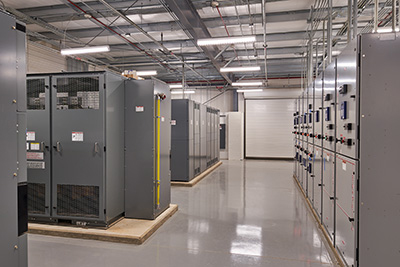Hate it or love it, mission critical construction is, well, a critical step for many businesses as they experience growth or expansion. However, more than any other type of project, mission critical construction can confuse or intimidate clients because it is highly technical, must follow precise schedules, and will positively (or negatively) affect day-to-day business operations.
With so much on the line, business owners need to know exactly what they’re signing up for when they take on a mission critical construction project. However, they are often met right out of the gate with a frustrating hurdle: abbreviations. That’s why we had Brian Cunneen, Nabholz’ mission critical expert, break down some of the most common abbreviations.
1. MOP – Method of Procedure.
This is a written, step-by-step account of how work is going to be performed. It is a requirement on any work that has the potential to affect operations; all parties must approve the MOP in advance of any work taking place.
2. CRAH/CRAC – Computer Room Air Handler/Conditioner.
Large, hi-tech systems put off lots of heat, which can eventually damage these expensive items (think about the heat your laptop puts off multiplied by a hundred). Computer room air handlers/conditioners serve the purpose of rejecting heat from the data center floor. A CRAH works with a chilled water system to provide cooling to the data center whereas the CRAC uses mechanical refrigeration and contains a compressor.
 3. ATS/MTS – Automatic Transfer Switch/ Manual Transfer Switch
3. ATS/MTS – Automatic Transfer Switch/ Manual Transfer Switch
This sophisticated piece of electrical equipment detects when a facility loses utility power and automatically transfer operations over to a standby emergency generator (the beginning of this video has a great visual aid to understand how the ATS functions). The ATS/MTS will also transfer utilities back to the original power source once it has been restored. This leads us to our next abbreviation:
4. UPS – Uninterruptible Power Supply
A UPS provides power for the crucial moments between the outage of the primary source of utility power to when the generator kicks on. This time is generally less than a minute, but when dealing with sophisticated equipment processing sales, emergency calls, or military data, it’s important these systems don’t experience a drop in power, even just for a minute. A UPS converts AC power to DC and then back to AC through an inverter to provide “clean” power. Batteries store the energy needed and allow it to kick in immediately. Because of the size and cost, most UPS systems are only used on critical items such as safety, critical mechanical, and electrical components.
5. PDU/STS – Power Distribution Unit/Static Transfer Switch
This is another component of the UPS. The power distribution unit controls the distribution of power through multiple outputs to downstream devices like computers or network racks. The static transfer switch allows a user to connect two UPS systems and switch back and forth between the two power sources.
6. RPP – Remote Power Panel
Whereas your UPS and PDU/STS are located elsewhere in the data center, the RPP is usually located on the data center floor. It is essentially a cabinet with a multitude of AC breakers where the equipment is connected. Some RPP’s can handle dual feeds (multiple UPS systems) which provide additional redundancy and flexibility for the data center operator.
7. VESDA – Very Early Smoke Detection Apparatus
VESDA is a highly sensitive air sampling system comprised of a network of tubes that sample and monitor the air continuously. It can detect the early signs of a fire before there are flames and full-on combustion.


